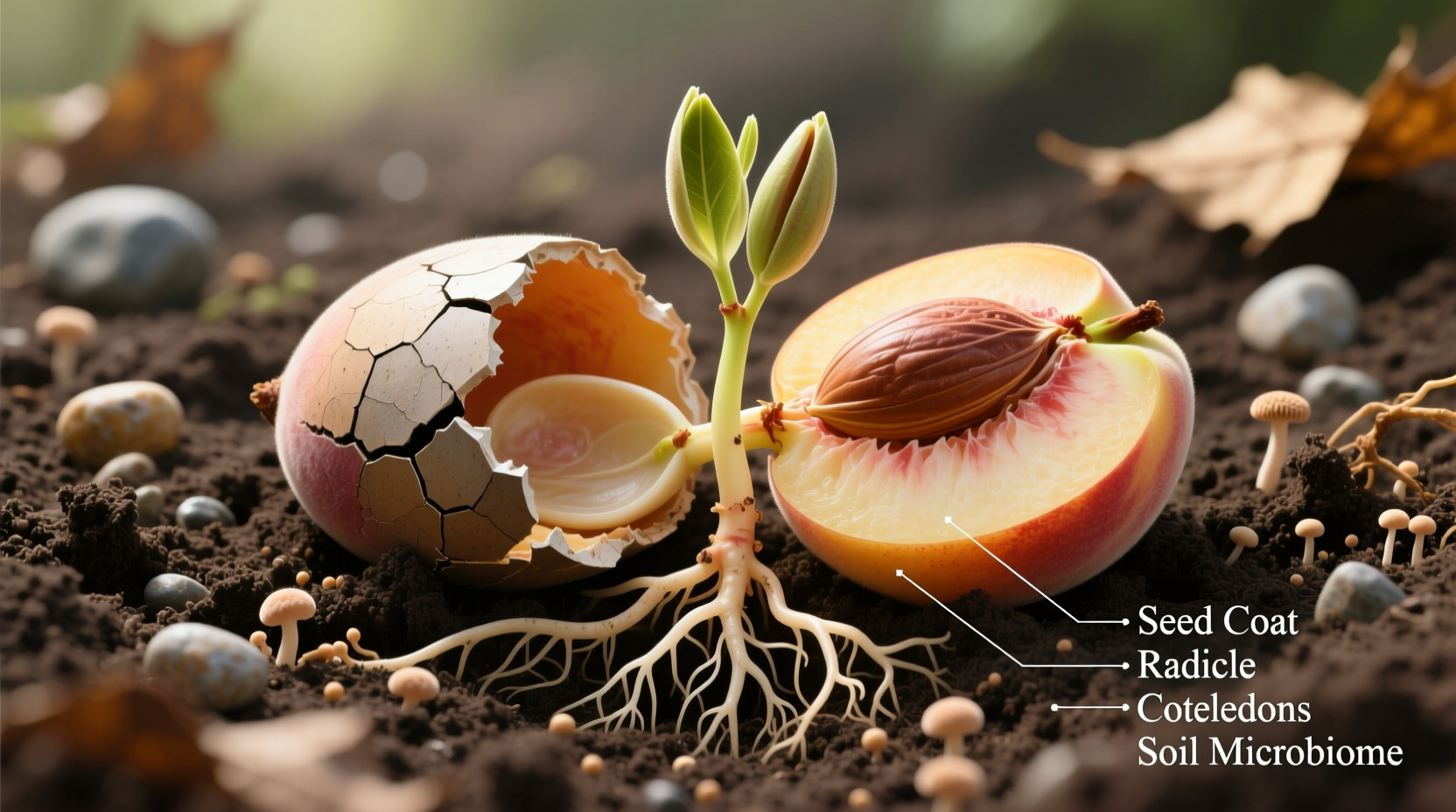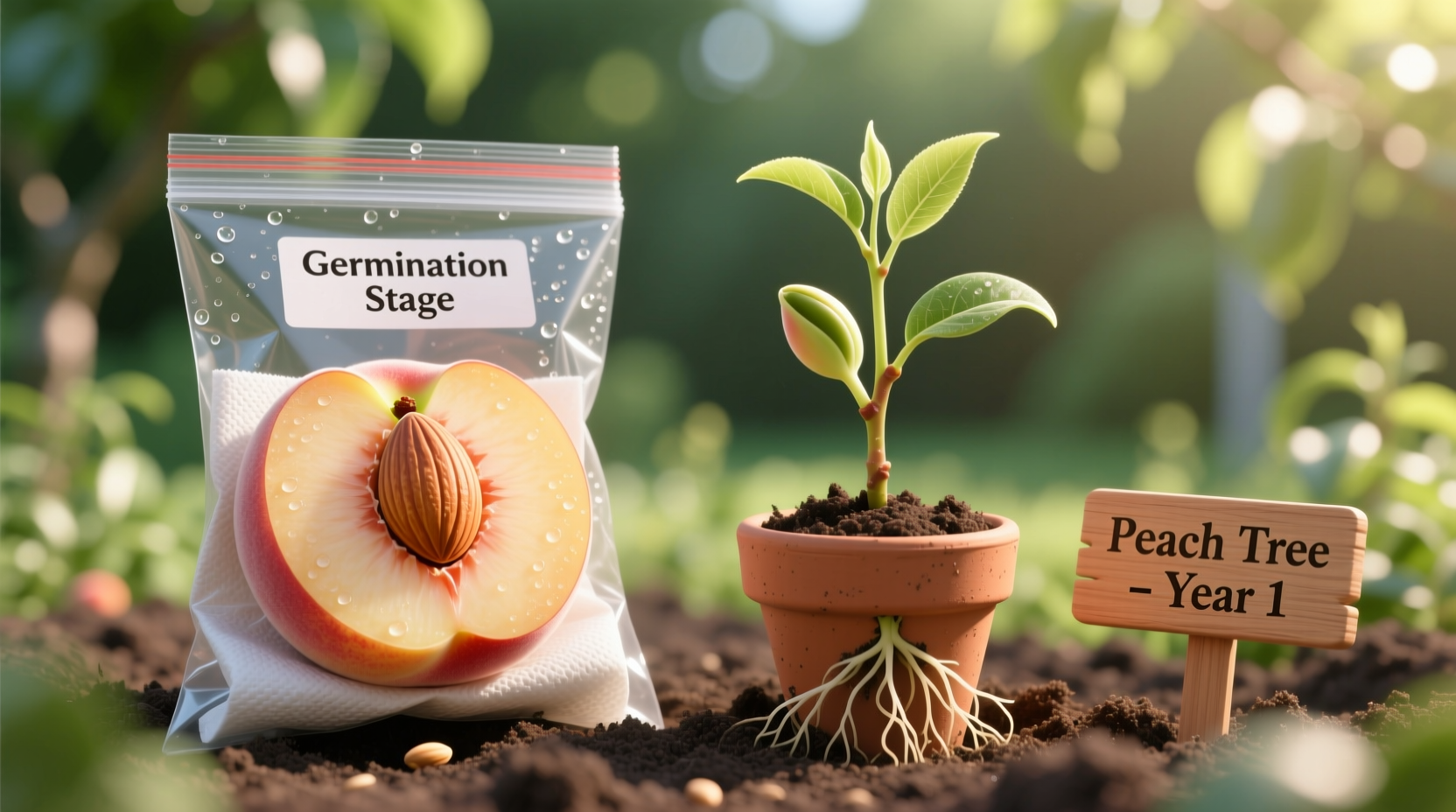Why Grow Peaches from Seed? Understanding Your Options
Many gardeners dream of growing their own peach tree from a pit, drawn by the romance of nurturing life from something as simple as a fruit seed. While it's certainly achievable, it's important to understand this isn't the fastest path to harvest. Unlike grafted trees that produce fruit in 2-3 years, seed-grown peach trees typically take 3-4 years to bear fruit, and the resulting fruit may differ significantly from the parent.
According to the USDA Agricultural Research Service, peach trees grown from seed exhibit genetic variation—meaning your harvest might be sweeter, more tart, larger, or smaller than the original fruit. This genetic diversity can be exciting for breeding projects but frustrating if you're seeking consistent commercial-quality fruit.

Seed Selection: Starting with the Right Foundation
Not all peach pits will produce viable trees. For best results:
- Choose seeds from locally grown, ripe, organic peaches (commercial varieties are often bred for shipping, not flavor)
- Look for plump, undamaged pits without cracks
- Seeds from freestone varieties generally germinate better than clingstone
- Use fresh seeds—dried-out pits have significantly lower germination rates
The University of California Cooperative Extension recommends planting seeds immediately after extraction for highest success rates, as peach seeds lose viability quickly when dried.
Cold Stratification: The Non-Negotiable Step
This critical process mimics winter conditions that break seed dormancy. Peach seeds require 600-900 hours below 45°F (7°C) to germinate properly—a process called cold stratification.
| Stratification Method | Time Required | Success Rate | Best For |
|---|---|---|---|
| Natural outdoor planting | Entire winter season | 60-70% | Gardeners in zones 5-8 |
| Refrigerator method | 8-12 weeks | 80-90% | All climates |
| No stratification | N/A | <5% | Not recommended |
Step-by-Step Seed Planting Guide
Preparing Your Seeds
- Extract seeds from ripe peaches, removing all fruit residue
- Clean thoroughly and allow to air-dry for 24 hours
- For refrigerator method: Wrap in slightly damp paper towel, place in sealed container, refrigerate at 34-40°F (1-4°C)
- Check weekly for mold or premature sprouting
Planting Your Stratified Seeds
When roots emerge (typically 8-12 weeks), it's time to plant:
- Use 6-8" pots with drainage holes filled with well-draining potting mix
- Plant seeds 2-3" deep, root-end down if visible
- Water thoroughly but avoid waterlogging
- Place in warm location (70-85°F/21-29°C) with indirect light
First-Year Care: Setting Up for Success
Young peach trees need careful attention during their first growing season:
- Watering: Keep soil consistently moist but not soggy—about 1" of water weekly
- Sunlight: Provide 6-8 hours of direct sun daily once established
- Fertilizing: Wait until second leaf emerges, then use balanced 10-10-10 fertilizer monthly
- Pest control: Monitor for aphids and scale; use insecticidal soap if needed
When your seedling reaches 12-18" tall and has several sets of leaves, it's ready for transplanting outdoors—typically in late spring after last frost. Choose a location with full sun and well-draining soil, spacing trees 15-20 feet apart.
Managing Expectations: The Long Road to Harvest
Understanding the realistic timeline prevents disappointment:
| Growth Stage | Timeline | Key Milestones |
|---|---|---|
| Germination | 1-3 months after planting | First leaves emerge; 2-6" tall |
| First Year | Spring to fall | 12-36" height; develops strong root system |
| Second Year | Entire growing season | 3-6 feet tall; may produce first flowers |
| Fruiting | Year 3-4 | First harvest (typically small yield) |
The National Gardening Association notes that only about 25% of seed-grown peach trees produce fruit comparable to commercial varieties. Most develop unique characteristics that may be better suited for breeding than direct consumption.
Climate Considerations: Where Peach Seeds Will Thrive
Peach trees require specific climate conditions to succeed:
- USDA hardiness zones 5-9 (with proper winter protection in zone 5)
- Minimum 600-900 chilling hours below 45°F (7°C)
- Long, warm growing season (150-200 frost-free days)
- Well-defined seasons (problematic in subtropical climates)
Gardeners in warmer zones (8-9) should select low-chill varieties like 'Florida King' or 'Tropic Snow' that require only 100-200 chilling hours. The University of California Cooperative Extension reports these varieties have revolutionized peach growing in traditionally challenging climates.
When to Choose Grafted Trees Instead
While growing from seed is rewarding, grafted trees offer significant advantages for most home gardeners:
- Guaranteed fruit quality matching the parent tree
- Earlier fruiting (2-3 years vs. 3-4+ years)
- Dwarf varieties available for small spaces
- Enhanced disease resistance through rootstock selection
Consider growing from seed if you're interested in breeding new varieties, want maximum cold hardiness, or simply enjoy the gardening process. For reliable harvests of specific peach varieties, grafted trees remain the practical choice.
Troubleshooting Common Seed-Growing Challenges
Even with proper care, you may encounter these issues:
- Failed germination: Most often due to insufficient chilling hours or dried-out seeds
- Leggy growth: Caused by insufficient light—move to sunnier location
- Leaf yellowing: Could indicate overwatering or nutrient deficiency
- No fruit after 4 years: May need cross-pollination or have incompatible climate
Remember that seed-grown peach trees often develop deeper root systems than grafted varieties, potentially offering greater drought tolerance once established—a valuable trait as climate patterns shift.











 浙公网安备
33010002000092号
浙公网安备
33010002000092号 浙B2-20120091-4
浙B2-20120091-4